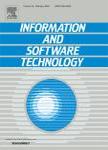版权所有:内蒙古大学图书馆 技术提供:维普资讯• 智图
内蒙古自治区呼和浩特市赛罕区大学西街235号 邮编: 010021

作者机构:ABB Robot N-4349 Bryme Norway Simula Res Lab Lysaker Norway Univ Stavanger N-4036 Stavanger Norway
出 版 物:《INFORMATION AND SOFTWARE TECHNOLOGY》 (信息与软件技术)
年 卷 期:2015年第57卷
页 面:169-185页
核心收录:
学科分类:08[工学] 0835[工学-软件工程] 0812[工学-计算机科学与技术(可授工学、理学学位)]
基 金:Norwegian Research Council under the Industrial PhD Program Certus SFI grant ABB Robotics
主 题:Constraint programming Continuous integration Robotized painting Software testing Distributed real time systems Agile development
摘 要:Context: Testing complex industrial robots (CIRs) requires testing several interacting control systems. This is challenging, especially for robots performing process-intensive tasks such as painting or gluing, since their dedicated process control systems can be loosely coupled with the robot s motion control. Objective: Current practices for validating CIRs involve manual test case design and execution. To reduce testing costs and improve quality assurance, a trend is to automate the generation of test cases. Our work aims to define a cost-effective automated testing technique to validate CIR control systems in an industrial context. Method: This paper reports on a methodology, developed at ABB Robotics in collaboration with SIMULA, for the fully automated testing of CIRs control systems. Our approach draws on continuous integration principles and well-established constraint-based testing techniques. It is based on a novel constraint-based model for automatically generating test sequences where test sequences are both generated and executed as part of a continuous integration process. Results: By performing a detailed analysis of experimental results over a simplified version of our constraint model, we determine the most appropriate parameterization of the operational version of the constraint model. This version is now being deployed at ABB Robotics s CIR testing facilities and used on a permanent basis. This paper presents the empirical results obtained when automatically generating test sequences for CIRs at ABB Robotics. In a real industrial setting, the results show that our methodology is not only able to detect reintroduced known faults, but also to spot completely new faults. Conclusion: Our empirical evaluation shows that constraint-based testing is appropriate for automatically generating test sequences for CIRs and can be faithfully deployed in an industrial context. (C) 2014 Elsevier B.V. All rights reserved.